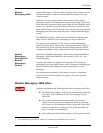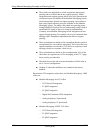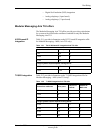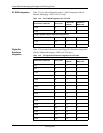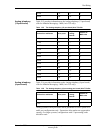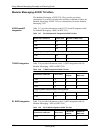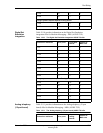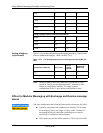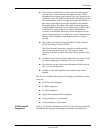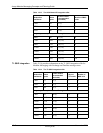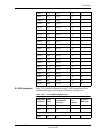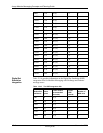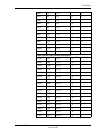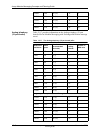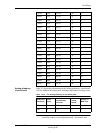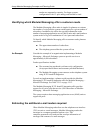
Port Sizing
November 2004
Avaya Modular Messaging Concepts and
Planning Guide
12-11
! These tables are applicable to switch integrations that support
queuing and to switches that do not support queuing. Switch
integrations that support queuing allow calls to be queued on the
switch until a port is available on the Modular Messaging system.
Switch integrations that do not support queuing cause callers to
hear a busy signal when no ports are available on the Modular
Messaging system. The tables reflect both non-queuing (using
Erlang B and P.02 Grade of Service) and queuing (using Erlang C
model and P.05 Grade of Service) sizing recommendations.
Currently, most Modular Messaging switch integrations do not
support switch queuing. For example, the Avaya Communication
Manager QSIG integration implementation does not support
queuing.
! These tables are based on Erlang B with P.02 Grade of Service
(GOS) and Erlang C with P.05 GOS.
The Erlang B model represents a scenario in which incoming
calls are not queued on the switch. The Erlang C model
represents a scenario in which incoming calls are queued on the
switch.
! Calculations are based on the assumption that the system is used
for all messaging types, including voice, fax, and e-mail.
! The tables do not take into account the number of MAS units in
an N+1 server configuration.
! Number of subscriber mailboxes are rounded to the nearest
hundred.
The offers for Modular Messaging with Exchange and Domino message
stores are:
! H.323-based IP integration
! T1 QSIG integration
! E1 QSIG integration
! Digital Set Emulation (DSE) integration
! Analog telephony (12-port board)
! Analog telephony (4-port board)
H.323-based IP
integration
Table 12-13 provides information on the H.323-based IP integration offer
for Modular Messaging with Exchange and Domino message stores.



